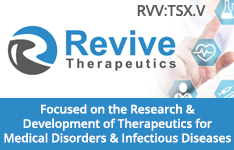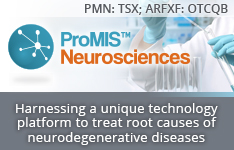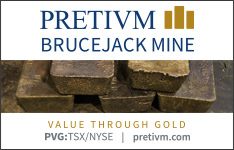The Life Sciences Report: Congratulations on being elected chairman of the board of the Massachusetts Biotechnology Council (MassBio). After almost three decades, it's the nation's oldest biotech trade organization. That really speaks to the respect that your peers have for you. Could you tell me a bit about MassBio? What is it about?
Geoff MacKay: MassBio is a not-for-profit organization representing the Massachusetts biotech industry. There are about 700 members, all in the life sciences industry. About 400 members are biotech companies, and the remaining are agencies and companies that support the industry, such as contract manufacturing organizations. MassBio is committed to advancing the development of new, critical science and technology.
MassBio is important not just to the industry, but also to the economy of Massachusetts, where employment in the life sciences has risen 50% during the last decade. As we know, these have been very tough economic times, and yet the life sciences in Massachusetts have continued to prosper, driving the state's economy while developing important lifesaving medicines.
TLSR: Is the life sciences industry larger in Massachusetts than it is in California?
GM: Yes, significantly larger per capita. Massachusetts is the premier hub in the world. One measure is just the number of companies in the state. In addition, the top five hospitals in the country receiving National Institutes of Health funding are here. What makes the cluster special in Massachusetts is the confluence of top academic institutions and hospitals with a proliferation of private companies. There's also a prolific, strong and committed venture capital community supporting the life sciences.
TLSR: You are also chairman of the Alliance for Regenerative Medicine (ARM), and will speak at the RegenMed Investor Day, hosted by ARM, on April 17 in New York City. This is a more specific area of biotechnology. Could you tell me just briefly about ARM?
GM: ARM is an advocacy organization dedicated to advancing the new field of regenerative medicine. It is more than an industry group—ARM represents and supports a whole cluster of biotech and regenerative medicine companies, as well as academic research institutions, patient advocacy groups, foundations and translational research centers. Other types of organizations, such as Blue Cross/Blue Shield, are members. When ARM stands before Congress or federal agencies—or even the general public—it truly is the representative of the regenerative medicine industry.
TLSR: Regenerative medicine does need special advocacy because its models are so different from traditional biotech. How old is ARM?
GM: It's only four years old. It was founded in 2009, and it already has more than 140 members. In this very short time it has become a true representation of the field, which is remarkable.
TLSR: There's a glaring valuation gap in the regenerative medicine industry. With the exception of Australian company Mesoblast Ltd. (MSB:ASE; MBLTY:OTCPK), with its $1.65 billion ($1.65B) market cap, publicly traded cell technology companies have really remained in the microcap depths. Some are even penny stocks. I don't see pharma supporting regenerative medicine, and I blame the low valuations. We even saw a phase 3 program in critical limb ischemia get shut down recently for lack of funding and implicit inability to partner. Tell me what you think pharma's problem is with regenerative medicine, and with cell therapies in general.
GM: I take a more optimistic view of the industry. I think current valuations reflect a point in time for the industry. The industry is young and investors reward later-stage opportunities. Actually, the fact that there are companies such as Mesoblast, where valuations are reaching very impressive precommercialization levels, is a dynamic that bodes well for the future.
"The fact that there are companies where valuations are reaching very impressive precommercialization levels is a dynamic that bodes well for the future."
In addition to public valuations, another way to look at the industry is through the lens of what's been happening on the private side. In the last 12–18 months, there have been deals involving major private companies, such as Healthpoint Ltd. (acquired by Smith & Nephew [SNN:NYSE]) and Advanced BioHealing Inc. (acquired by Shire Plc [SHPGY:NASDAQ; SHP:LSE]), in which device and pharmaceutical companies have made sizable investments (of $1.5B collectively) in acquiring cell therapy companies—and not just acquiring them for high-dollar values, but in multiples that were competitive by any measure of pharma or device valuation.
I'm not trying to overplay where the industry is. It is still young, and it is still emerging. Very few companies are coming out of phase 3 and into the realm of being valued based on revenue and profit. But there is reason to be confident.
You said pharma wasn't supporting regenerative medicine. It wasn't long ago that pharma was taking a watch-and-wait mentality. The pharma companies were sending midlevel business development and licensing people to regenerative medicine meetings to assess the assets. Eventually that translated into investments. Today, companies such as Johnson & Johnson (JNJ:NYSE), Shire, Pfizer Inc. (PFE:NYSE), Roche Holding AG (RHHBY:OTCQX), Smith & Nephew, GE Healthcare unit of General Electric [GE:NYSE]), Sanofi SA (SNY:NYSE) with its Genzyme unit and Astellas Pharma Inc. (ALPMF:OTCPK) have all made notable, tangible investments in the field.
We are at the beginning. It is not a free-for-all, but there are trends toward an increased number of pharma companies that are committed. We are also seeing an increased number of phase 2 trials that will eventually translate into phase 3 trials.
As for your comment about a critical limb ischemia program being terminated, I see that as normal—a phenomenon seen every day in drug, device and biologic development. There will be winners and losers in this field. I suspect the attrition rates of clinical trials in regenerative medicine are comparable to those in biologics, devices and drugs. A minority of cell therapies ultimately reach the patient, but that's the same risk profile we see in other areas of the life sciences.
With all the clinical activity and early investment by a critical mass of pharma, we have the beginnings of an industry that's transforming itself. The winners, such as Mesoblast, which has a higher valuation point, are signs of a growing confidence in the industry.
TLSR: Geoff, Mesoblast is one of about 19 companies on my personal list of publicly traded cell technology companies. I think of it as an outlier. I'm thinking of other, much smaller companies that have comparable technologies and are in the $200 million ($200M) market cap range. The cell technology industry is probably more than 20 years old now. I'm thinking that Amgen Inc. (AMGN:NASDAQ), as a pioneer in biologics, had a much higher valuation than $200M by the time it was 20 years into its life as a public company. Biologics took off faster, and I believe the cell technology industry really is lagging from the point in time at which it began.
GM: People do like to draw the analogy, comparing the cell therapy industry to monoclonal antibodies. We look at what happened to Genentech (now a unit of Roche Holding AG) and Amgen. Directionally, they represent a very good analog, but the challenges of developing cell therapies between the 1990s and now have been more challenging and difficult.
The antibody analogy becomes very relevant when we look at the cell therapy industry and see a critical mass of clinical trials in phases 1 and 2, and even a few in phase 3, in very relevant clinical disease indications. Those therapies will not only change healthcare, but also will lead to commercial success.
"With all the clinical activity and early investment by a critical mass of pharma, we have the beginnings of an industry that's transforming itself."
The challenges that faced the industry in the 1990s led to false starts and delays. Manufacturing, procuring reimbursement codes and distribution logistics for living cell technologies all required unique approaches that were not well addressed in the early years. But now we have enough confidence to think a sizable portion of therapies will go on to commercial success. There are clinical trials in orthopedics, cardiology, soft tissue applications, and ocular, oncology and diabetes indications going on currently, and it's pretty clear that the technologies are in the process of changing the practice of medicine. With that comes the commercial success.
TLSR: Where is investment going today in the field of regenerative medicine?
GM: George Daley has made some insightful comments. He is director of the Stem Cell Transplantation Program at Children's Hospital Boston, and he's a founding member of the executive committee of the Harvard Stem Cell Institute, as well as past president of the International Society for Stem Cell Research. He is one of the top opinion leaders in the field of stem cell research. When I heard him speak at the World Stem Cell Summit last December, he was doing a strengths, weaknesses, opportunities and threats analysis of the field. He tried to address the trends from a biologically pragmatic point of view, and name therapeutic areas that should lead to successful product generation. Daley was saying, "Let's look at what is being researched and what will really change medical practice, at least in the midterm."
The first of the three therapeutic areas that Daley identified is the retinal application. A number of companies are doing very exciting work in treating blindness and different ophthalmology applications. This is an immunoprivileged area (an area that is less prone to immune reactions), and regenerative medicine can do very well in the space. The second area is spinal cord injury—a huge unmet medical need where a lot of good, solid research is being applied. The third area is dopaminergic neurons, another central nervous system application.
TLSR: Your firm, Organogenesis Inc., has had a lot of success with allogeneic (from the same species) materials. Given the obvious advantages of allogeneic cost of goods sold, do you see this industry migrating in that direction, away from autologous (using the patient's own cells or tissues) technologies?
GM: I do not. The simple way to view the science is to say that if an allogeneic therapy can work in lieu of an autologous therapy, it absolutely should be used, for the reason that you've specified. An allogeneic product can be mass-produced, industrialized and delivered to a clinic at a price point that is comparable to other healthcare modalities, and that is significantly more convenient than autologous therapies. The business model is understood and already integrated into medical practice. For every reason that you can imagine, if an allogeneic product can work, that's the route to go.
"It's pretty clear that the technologies are in the process of changing the practice of medicine. With that comes the commercial success."
But we know, primarily for immunological reasons, that there are a number of therapeutic applications for which an allogeneic approach may not lend itself. For those indications, an autologous approach would be necessary.
The one caution I would make about autologous technology is that the unmet need must be rather dramatic, simply because the cost will be higher and the convenience will be less. Unmet medical need and the willingness of payers to pay must be well understood prior to embarking on this technology.
TLSR: You've commented about immunogenicity being a potential problem with allogeneic therapies. You named retinal applications as being a wonderful ground for using allogeneic cells because it's a contained system and not exposed to the immune system. You could say the same about the spinal cord, as well as the brain, where clinical trials are being conducted in stem cell therapies for lysosomal storage disorders. Doesn't the problem of immunogenicity or immunotoxicity really behoove us to continue studies in embryonically derived stem cells, where we have a better chance of having an immunoprivileged donor cell?
GM: Yes, I think it behooves us to continue the research. The whole topic of immunomodulation is important for the field of regenerative medicine. The story has yet to be unraveled and truly quantified as to the immunomodulatory effects of a mesenchymal stem cell, and of an embryonic stem cell. Can certain differentiated cells that are less immunogenic play a role? How important is the persistence of these cells to delivering a therapeutic benefit? That is fundamental and needs to be resolved in the field.
What's interesting is that there are a number of strategies that can be employed to address the topic of immunology, ranging from going to an autologous model to trying to deliver the right cells in the right concentrations, thereby providing some type of dampening of the immune system. It is an important topic, and there's a lot that needs to be learned.
TLSR: Geoff, it's been a great pleasure, and I thank you for taking the time with us.
GM: Likewise. Thank you very much.
Geoff MacKay has served in his current leadership role at Organogenesis Inc. since December 2003. MacKay served in various leadership positions at Novartis AG, including vice president and business unit head of transplantation and immunology at Novartis Canada, vice president of tissue engineering in Novartis USA, head of global sales in immunology and transplantation based in Basel, Switzerland, and sales and marketing manager of Novartis Biotech Europe. MacKay has been involved in the emerging field of regenerative medicine for the last decade. He currently serves as chairman of the board of directors for the Massachusetts Biotechnology Council, and as chair of the Alliance for Regenerative Medicine.
Want to read more Life Sciences Report interviews like this? Sign up for our free e-newsletter, and you'll learn when new articles have been published. To see a list of recent interviews with industry analysts and commentators, visit our Streetwise Interviews page.
DISCLOSURE:
1) George S. Mack conducted this interview for The Life Sciences Report and provides services to The Life Sciences Report as an independent contractor. He or his family own shares of the following companies mentioned in this interview: None.
2) The following companies mentioned in the interview are sponsors of The Life Sciences Report: None. Streetwise Reports does not accept stock in exchange for its services or as sponsorship payment. Johnson & Johnson is not affiliated with Streetwise Reports.
3) Geoff Mackay: I or my family own shares of the following companies mentioned in this interview: Organogenesis Inc. I personally or my family am paid by the following companies mentioned in this interview: Organogenesis Inc. My company has a financial relationship with the following companies mentioned in this interview: Organogenesis Inc. I was not paid by Streetwise Reports for participating in this interview. Comments and opinions expressed are my own comments and opinions. I had the opportunity to review the interview for accuracy as of the date of the interview and am responsible for the content of the interview.
4) Interviews are edited for clarity. Streetwise Reports does not make editorial comments or change experts' statements without their consent.
5) The interview does not constitute investment advice. Each reader is encouraged to consult with his or her individual financial professional and any action a reader takes as a result of information presented here is his or her own responsibility. By opening this page, each reader accepts and agrees to Streetwise Reports' terms of use and full legal disclaimer.
6) From time to time, Streetwise Reports LLC and its directors, officers, employees or members of their families, as well as persons interviewed for articles and interviews on the site, may have a long or short position in securities mentioned and may make purchases and/or sales of those securities in the open market or otherwise.



























































